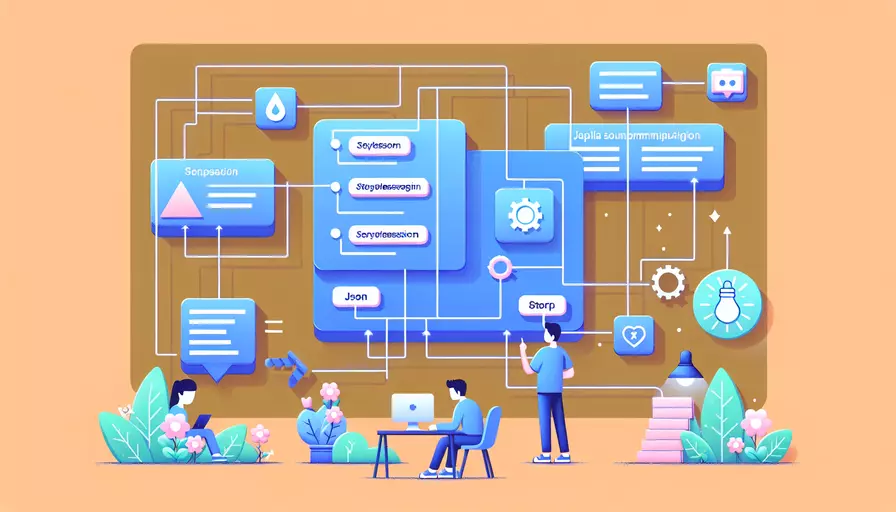
在Vue中,你可以通过几种不同的方法来获取JSON数据。1、使用Axios库来进行HTTP请求,2、利用Fetch API,3、通过本地数据文件。这些方法能够帮助你在Vue组件中获取和处理JSON数据,以下是详细的描述和示例。
一、使用Axios库
Axios是一个基于Promise的HTTP库,适用于浏览器和Node.js。它简洁易用,支持拦截器、取消请求等功能,非常适合在Vue项目中使用。
-
安装Axios:
npm install axios -
在Vue组件中使用Axios:
<template><div>
<h1>JSON Data</h1>
<pre>{{ jsonData }}</pre>
</div>
</template>
<script>
import axios from 'axios';
export default {
data() {
return {
jsonData: {}
};
},
created() {
axios.get('https://api.example.com/data.json')
.then(response => {
this.jsonData = response.data;
})
.catch(error => {
console.error("There was an error fetching the data:", error);
});
}
};
</script>
二、利用Fetch API
Fetch API是现代JavaScript中的内置功能,用于进行网络请求。它同样基于Promise,且无需额外安装库。
- 在Vue组件中使用Fetch:
<template><div>
<h1>JSON Data</h1>
<pre>{{ jsonData }}</pre>
</div>
</template>
<script>
export default {
data() {
return {
jsonData: {}
};
},
created() {
fetch('https://api.example.com/data.json')
.then(response => response.json())
.then(data => {
this.jsonData = data;
})
.catch(error => {
console.error("There was an error fetching the data:", error);
});
}
};
</script>
三、本地数据文件
如果你的JSON数据存储在本地文件中,比如在public目录下,你可以直接通过相对路径进行获取。
- 在Vue组件中引用本地JSON文件:
<template><div>
<h1>JSON Data</h1>
<pre>{{ jsonData }}</pre>
</div>
</template>
<script>
import jsonData from '@/assets/data.json';
export default {
data() {
return {
jsonData: jsonData
};
}
};
</script>
四、使用Vuex进行状态管理
在大型项目中,使用Vuex来管理应用的状态和数据是一种好方法。你可以通过Vuex的actions来获取JSON数据,并将其存储在Vuex store中。
-
安装Vuex:
npm install vuex -
创建Vuex Store:
// store/index.jsimport Vue from 'vue';
import Vuex from 'vuex';
import axios from 'axios';
Vue.use(Vuex);
export default new Vuex.Store({
state: {
jsonData: {}
},
mutations: {
setJsonData(state, data) {
state.jsonData = data;
}
},
actions: {
fetchJsonData({ commit }) {
axios.get('https://api.example.com/data.json')
.then(response => {
commit('setJsonData', response.data);
})
.catch(error => {
console.error("There was an error fetching the data:", error);
});
}
}
});
-
在Vue组件中使用Vuex Store:
<template><div>
<h1>JSON Data</h1>
<pre>{{ jsonData }}</pre>
</div>
</template>
<script>
import { mapState, mapActions } from 'vuex';
export default {
computed: {
...mapState(['jsonData'])
},
created() {
this.fetchJsonData();
},
methods: {
...mapActions(['fetchJsonData'])
}
};
</script>
总结来看,Vue提供了多种获取JSON数据的方法,包括使用Axios库、Fetch API、本地数据文件以及Vuex状态管理。选择哪种方法取决于你的项目需求和偏好。如果你需要处理复杂的数据流和状态管理,建议使用Vuex。如果你更倾向于简洁和快速的实现,可以选择Axios或Fetch API。希望这些方法能帮助你更好地在Vue项目中处理JSON数据。
相关问答FAQs:
1. 如何在Vue中获取本地JSON文件?
在Vue中获取本地JSON文件非常简单。可以使用Vue的内置方法和语法来实现。首先,将JSON文件放置在Vue项目的静态文件夹(例如public文件夹)中。然后,在需要获取JSON数据的组件中,可以使用axios或fetch等库来获取数据。以下是一个示例:
<template>
<div>
<h1>{{ jsonData.title }}</h1>
<p>{{ jsonData.description }}</p>
</div>
</template>
<script>
export default {
data() {
return {
jsonData: {}
};
},
mounted() {
this.fetchData();
},
methods: {
fetchData() {
fetch('/data.json') // JSON文件的路径
.then(response => response.json())
.then(data => {
this.jsonData = data;
});
}
}
};
</script>
2. 如何通过API获取JSON数据并在Vue中使用?
如果要从API获取JSON数据并在Vue中使用,可以使用axios或fetch等库来发送HTTP请求。以下是一个示例:
<template>
<div>
<h1>{{ jsonData.title }}</h1>
<p>{{ jsonData.description }}</p>
</div>
</template>
<script>
import axios from 'axios';
export default {
data() {
return {
jsonData: {}
};
},
mounted() {
this.fetchData();
},
methods: {
fetchData() {
axios.get('https://api.example.com/data')
.then(response => {
this.jsonData = response.data;
})
.catch(error => {
console.error(error);
});
}
}
};
</script>
3. 如何在Vue中处理异步获取的JSON数据?
在Vue中处理异步获取的JSON数据需要一些额外的步骤。可以使用Vue提供的v-if指令来确保在数据加载完成之前不会渲染组件。以下是一个示例:
<template>
<div>
<h1 v-if="jsonData.title">{{ jsonData.title }}</h1>
<p v-if="jsonData.description">{{ jsonData.description }}</p>
<p v-else>Loading...</p>
</div>
</template>
<script>
export default {
data() {
return {
jsonData: {}
};
},
mounted() {
this.fetchData();
},
methods: {
fetchData() {
fetch('/data.json') // JSON文件的路径
.then(response => response.json())
.then(data => {
this.jsonData = data;
});
}
}
};
</script>
在上述示例中,使用了v-if指令来检查jsonData对象的属性是否存在,以决定何时渲染组件。如果jsonData的属性还没有被赋值,将显示"Loading…"。一旦数据加载完成,将根据属性的存在与否来显示标题和描述。
文章标题:vue如何拿到json,发布者:不及物动词,转载请注明出处:https://worktile.com/kb/p/3609255

 微信扫一扫
微信扫一扫  支付宝扫一扫
支付宝扫一扫 